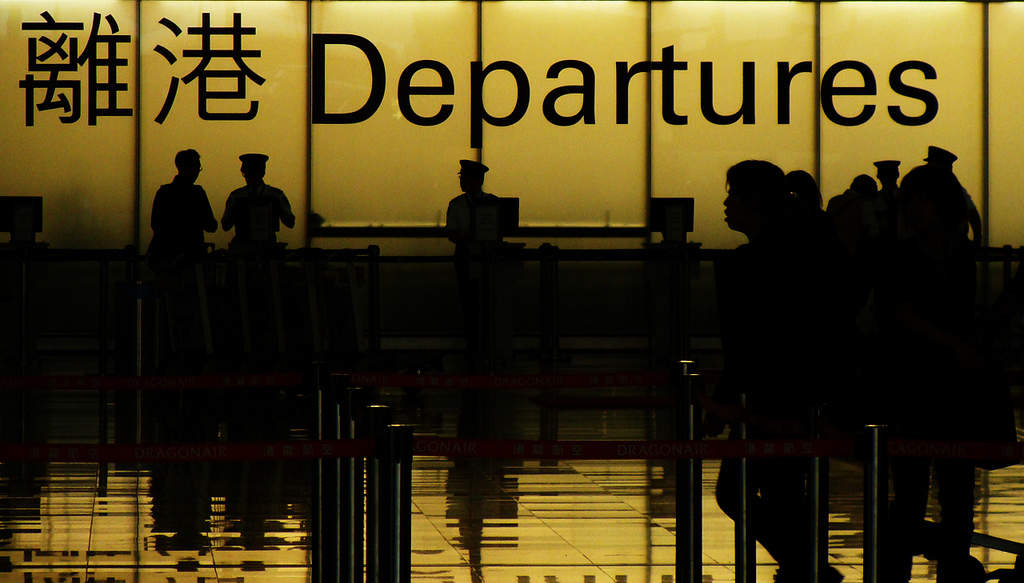
When a traveler reaches the airport today, he is immediately confronted by swarms of airport staff, other travelers, airline personnel and others. The traveler maneuvers his way through the crowds, finds the appropriate counter to check in, and stands in line. And then he waits.
At the counter, the traveler will present his passport and receive a boarding card. The passport and boarding card then serve as “identification tokens” through the remainder of the airport experience. While the airline employee at the desk now knows who this traveler is, the traveler will need to continuously verify his identity when confronted with each additional stakeholder during his journey through the airport.
The next stop is security. In the United States, the TSA is responsible for verifying and checking each traveler. Again, the traveler stands in line and waits to approach the TSA agent responsible for checking the passport and boarding card, and for comparing the face and name on these identification tokens with the person standing in line. Once the person is identified, he then goes through the security check, has his carry-on bag checked, and moves on to the next step.
Once a passenger completes the TSA process, he then continues to the next stakeholder at border control. In some airports, travelers have the option to use a biometric check. Those registered with biometric passports in the system can approach the biometric checkpoint, place their passport on the scanner, and be verified by facial recognition or fingerprint, though this process still requires the traveler to be registered in the system. Travelers not enrolled in the biometric system must again line up to have their identities verified by the border agent.
After border control, travelers often have the opportunity to stop in at duty free – yet another stakeholder to whom the traveler must prove his identity, and dig through his bag for his passport and boarding card to make a purchase.
Some travelers are authorized to enter an airline’s lounge while awaiting their flights. Here again, they will need to present their identification tokens to another stakeholder in the airport journey.
Finally, travelers will need to re-identify themselves once more at the boarding gate so airline personnel can verify that travelers and their identification tokens match.
This constant need to re-identify oneself is inefficient, and causes bottlenecks throughout the airport experience. With the growing number of travelers, these processes must be streamlined.
Biometric Solutions to Airport Bottlenecks
For many airports, simply expanding in size, infrastructure and staff is not an option due to cost and real estate availability. As such, biometric solutions have become the prevalent answer to the exponential increase in air travelers across the globe. Biometrics are helping to move people through airports faster and more securely. Presently, 800 million biometric passports are in circulation, resulting in more airports utilizing biometric scanners as part of their check-in process. In Europe alone, 240 airports have added biometric scanners to meet this new demand. However, the current biometric solutions in place only scratch the surface of the potential efficiency biometrics can create in airports.
The required level of efficiency in airports can be achieved by implementing in-motion identification technology. With in-motion identification, an enrolled traveler is identified as they walk at their own pace, with no need to slow down or stop at a biometric checkpoint, or line up for a person to verify the traveler’s identity.
The traveler will only have to enroll him/herself upon entering the airport along with his/her passport information and flight details. Then, as they move through the airport, biometric checkpoints become passive experiences, as travelers can be identified as they walk. Only high-risk passengers and others who have not enrolled upon airport entry will need to be flagged for additional security checks. With biometric in-motion identification, the person becomes a “single travel token” who can seamless move between stakeholders without needing to present additional information at each point in the journey.
Efficiency, Security and Privacy
Turning the traveler into a single travel token who seamlessly moves between stakeholders without ever having to show their passport or boarding pass after initial entry to the airport creates a faster, more efficient traveler journey, and eliminates the bottlenecks that make the airport experience stressful for travelers, and a costly, resource-heavy logistical undertaking for airports.
However, with global terror an ever-present threat, airports need to ensure the safety and security of the environment. Even in a flowing in-motion identification scenario, airports cannot afford to allow high-risk travelers to simply move about the airport without additional screening. As such, airports must accompany their biometric databases with risk-based knowledge about each traveler. With this second database, when a person is identified, the airport will have the necessary supplementary information to know if the traveler is “safe” or requires additional screening.
Any biometric technology that is deployed in an airport requires the highest levels of data security. However, airports must also make it clear that once the traveler boards their flight, no biometric template is stored in the airport’s database. Information is wiped as soon as the traveler departs. This knowledge can help travelers feel comfortable providing their biometric information to make the airport journey more efficient and more secure.
The Need for Universal Biometrics
Biometric solutions are becoming increasingly prevalent in airports around the globe to help streamline security and identification along the traveler journey; however, their current use does not meet the efficiency needs of the growing traveling population. Airports need solutions that will result in more efficient and more secure operations by syncing all the various airport stakeholders. In-motion identification provides the convenience, efficiency and security needed to streamline the airport journey for travelers and airport stakeholders alike.



